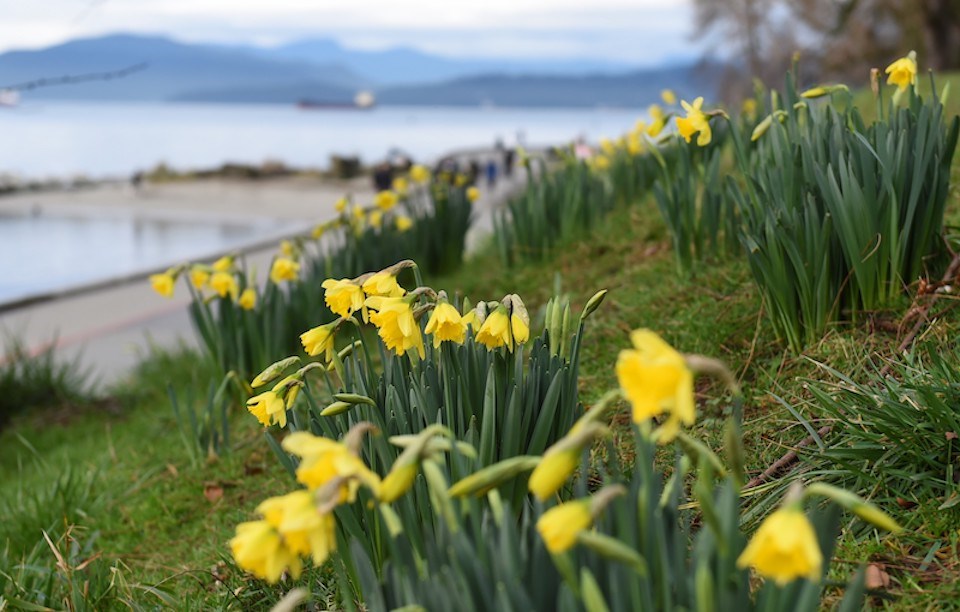Flowers have started blooming across Â鶹´«Ã½Ó³»due to a long stretch of above-average temperatures. But can they survive a blast of Arctic air?
Following the warmest December on record since 1939, several species of non-native flowers have blossomed across the Lower Mainland. Temperatures in the City of Â鶹´«Ã½Ó³»averaged a daily high of 7 C for the month, which is 3.4 C above the seasonal average of 3.6 C, Environment Canada meteorologist Armel Castellan told V.I.A.
Abbotsford had its warmest December ever, with temperatures 3.3 C above the seasonal average at 6.2 degrees. The previous record was set in 1979 at 5.8 C. Other areas of the province, including Cambell River, Comox, and Williams Lake, also had their warmest Decembers on record.
This week, social media sites have seen an influx of images of fresh blossoms spotted across Vancouver, including the popular daffodils at English Bay, which don't usually arrive until early spring.
Douglas Justice, Associate Director at the University of British Columbia (UBC) Botanical Garden, says many of the plants that are currently in bloom are not native to B.C. but come from other parts of the world, including areas along the Mediterranean and southern China.
"What's happening here is these flowers are experiencing what they might be in their home environment where they don't get as much cold as we do," he told V.I.A., noting that this would be a normal time for them to flower.
Many of B.C.'s native species require a long chilling period before the buds will blossom, meaning they need to be kept cold for a long time. Flowers from other parts of the world have a low chilling requirement and will bloom much quicker.
Metro Â鶹´«Ã½Ó³»weather forecast includes cold shift
Â鶹´«Ã½Ó³»saw temperatures following the winter solstice reach highs of 12 C and 13 C, with lows only dropping to 9.2 C in one instance. But temperatures are expected to shift significantly this weekend, falling to the freezing mark in the city; there are also a couple of opportunities for snowfall.
Environment Canada is also expecting a blast of modified Arctic air will make its way into the region next week. The cold event could produce temperatures as low as -5 C or -6 C.
Sadly, the delicate blossoms aren't expected to survive the upcoming temperature change -- but the plants should make it.
"[The cold] will kill off exposed flowers but not the plants -- the flowers aren't the same as the bud," Justice explained.
While plants put energy into creating flowers, they have defenses built into their DNA to shield them from potentially lethal cold that can occur after they blossom.
But some cold events could wreak havoc on local flora and fauna.
"If we had -10 C for two nights in a row then we could see damage to above-ground tissues on plants that aren't adapted to cold temperatures," he noted. "That's what people worry most in their gardens."
As for anyone who is worrying about their tulips, Justice said they will likely make it.
"Tulips won't flower and they will be okay. Soft growth in May or June is when they are vulnerable."




